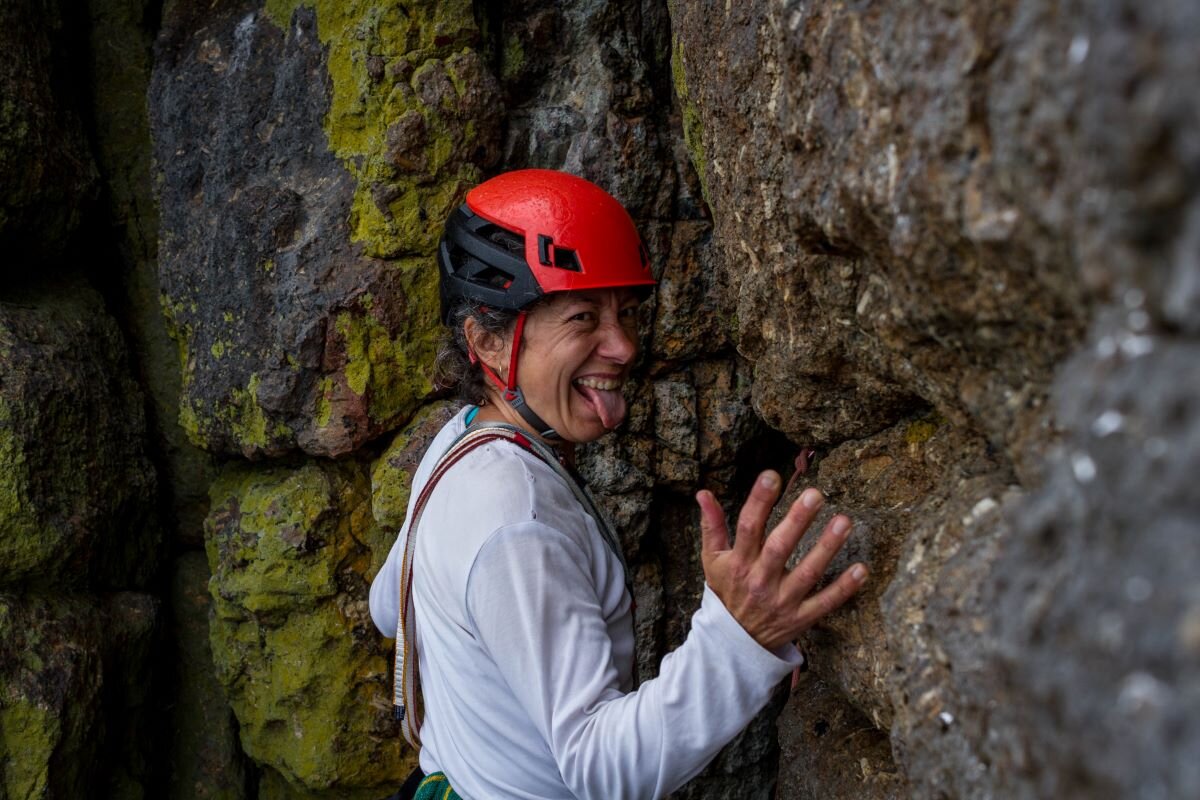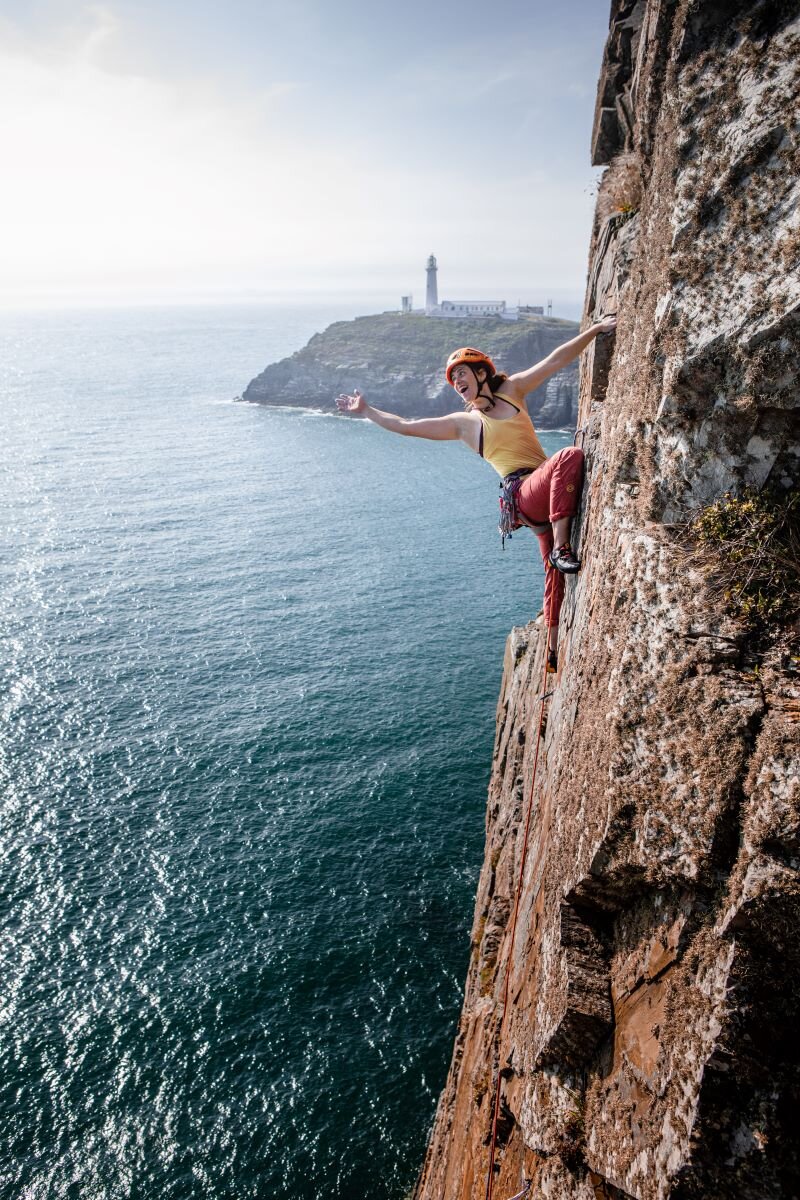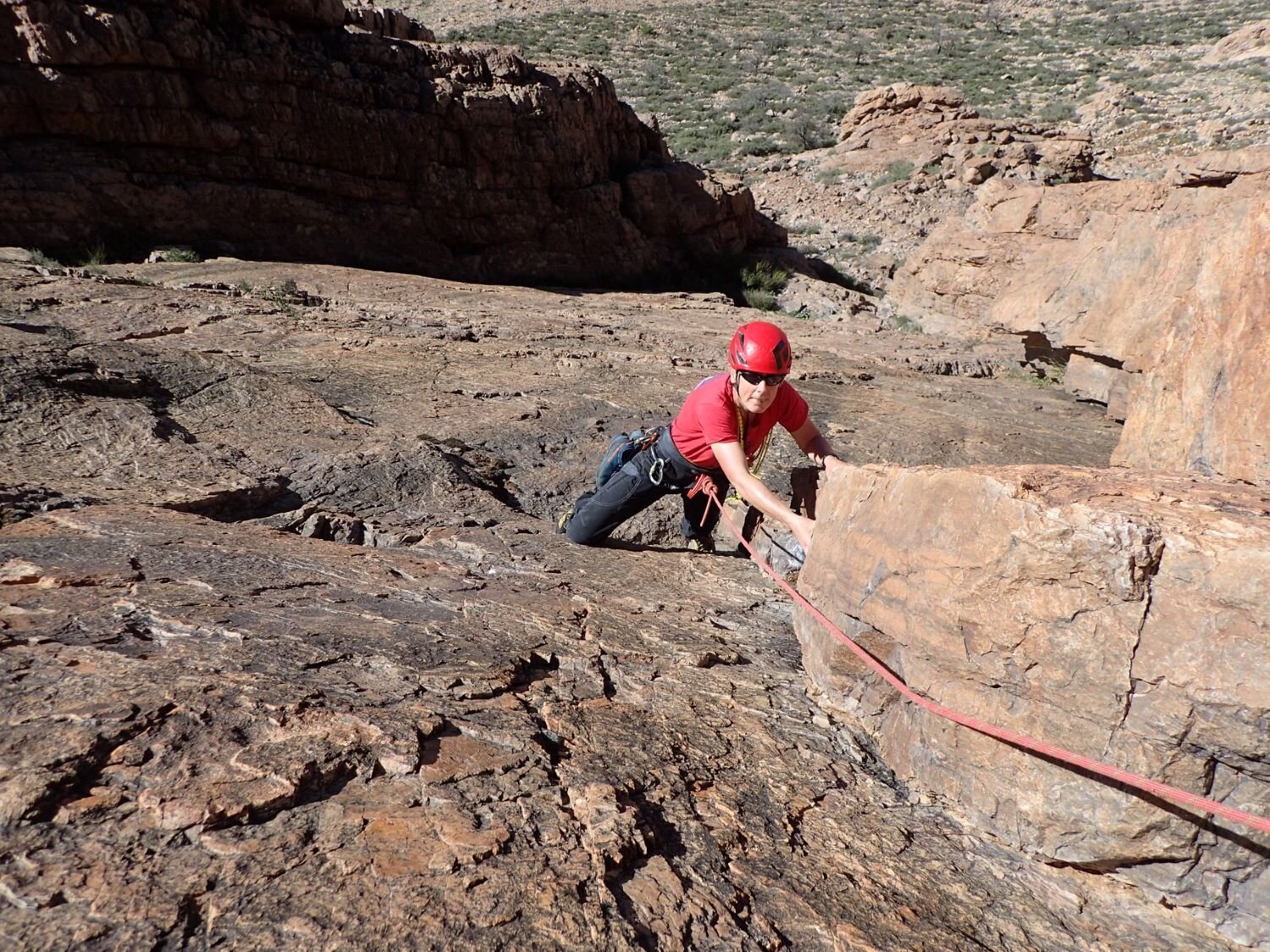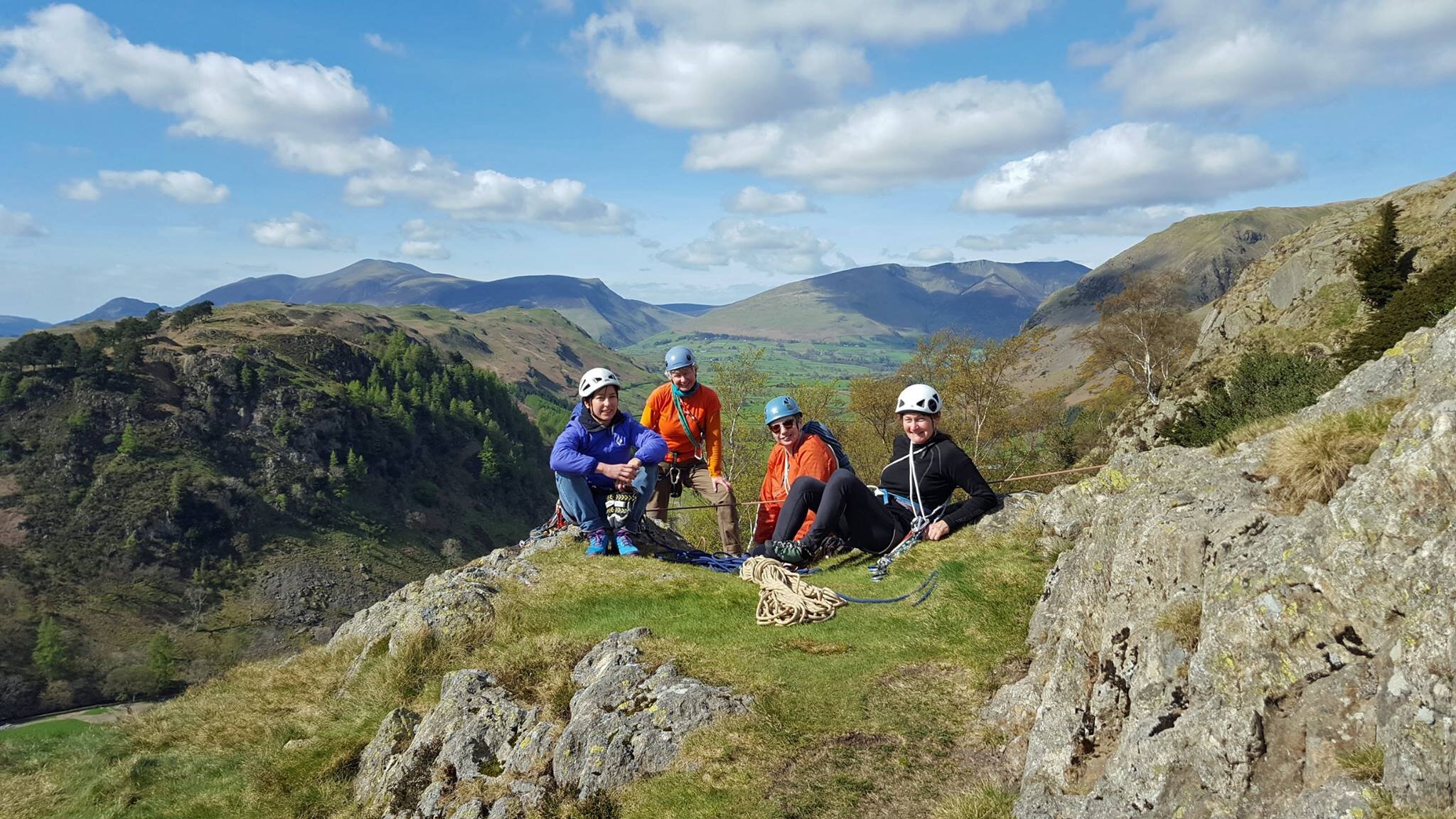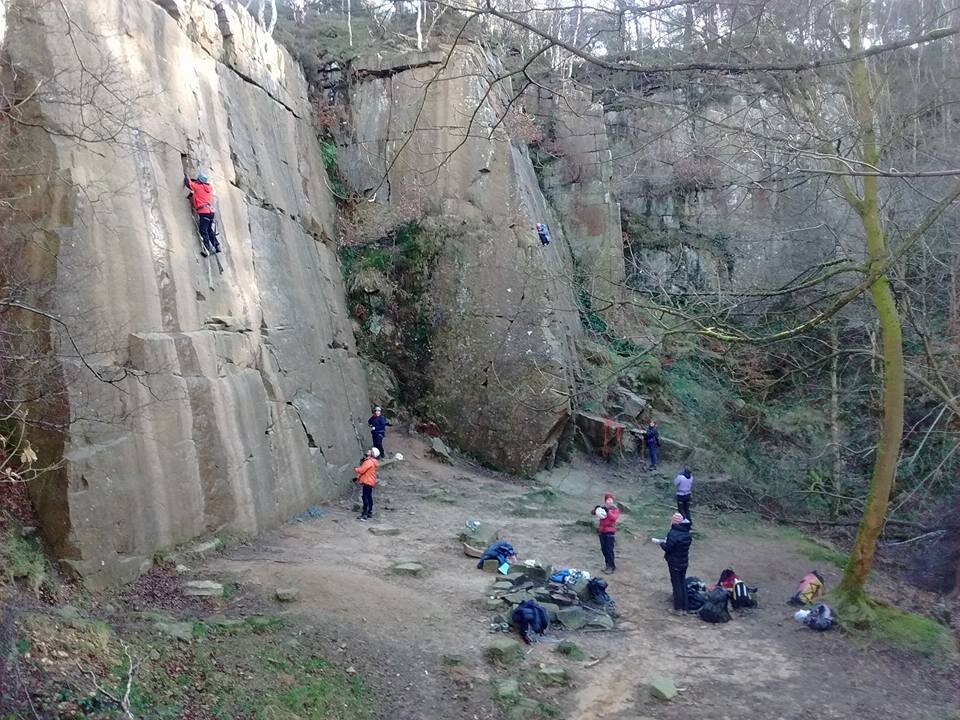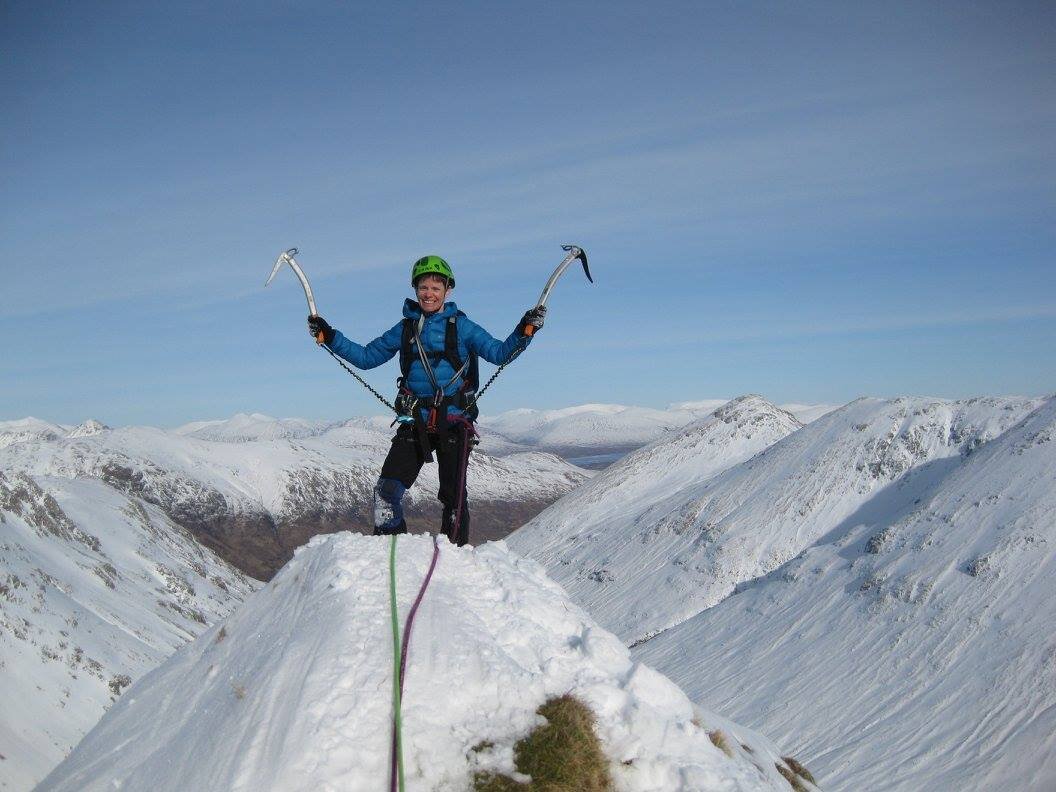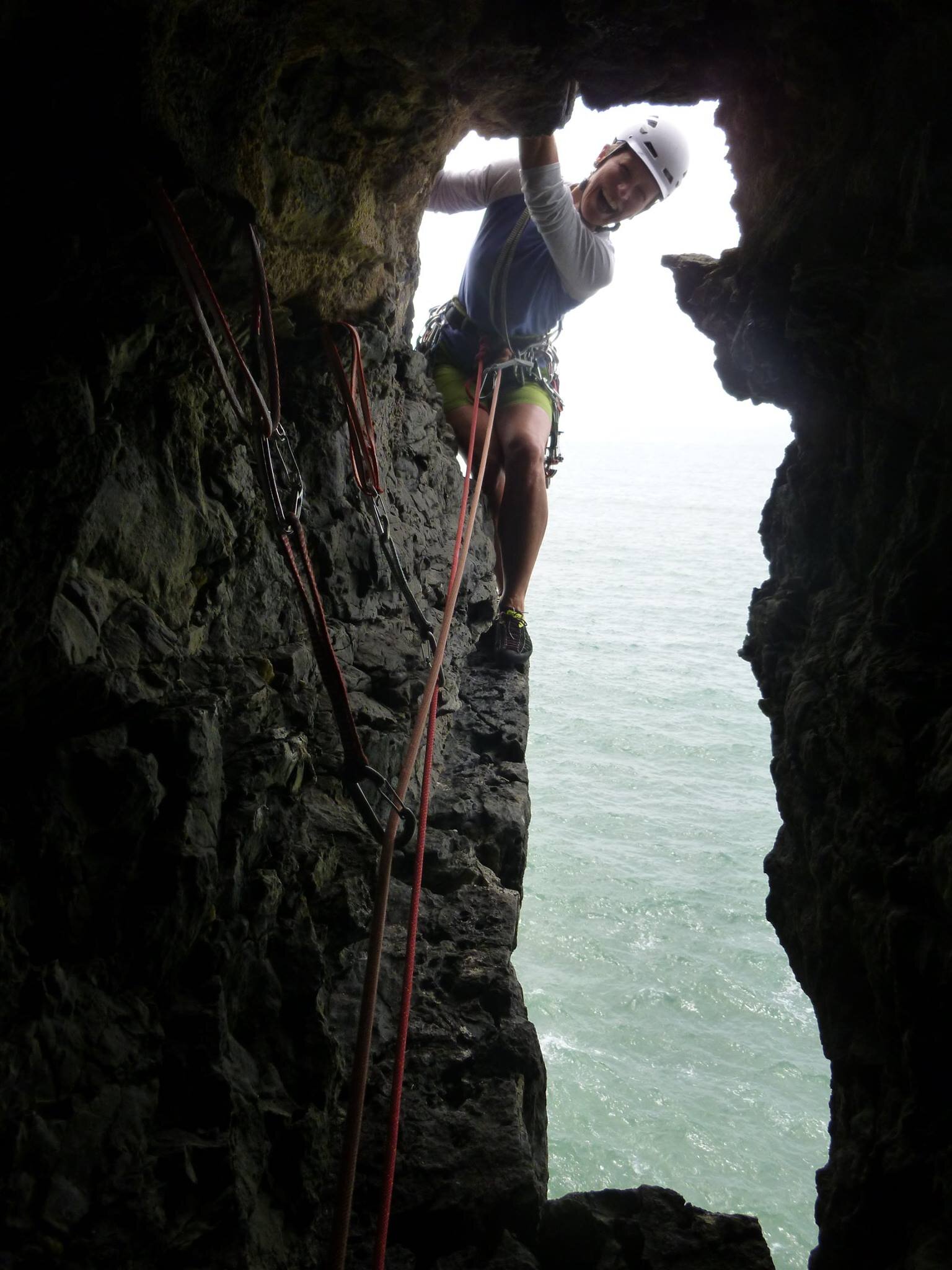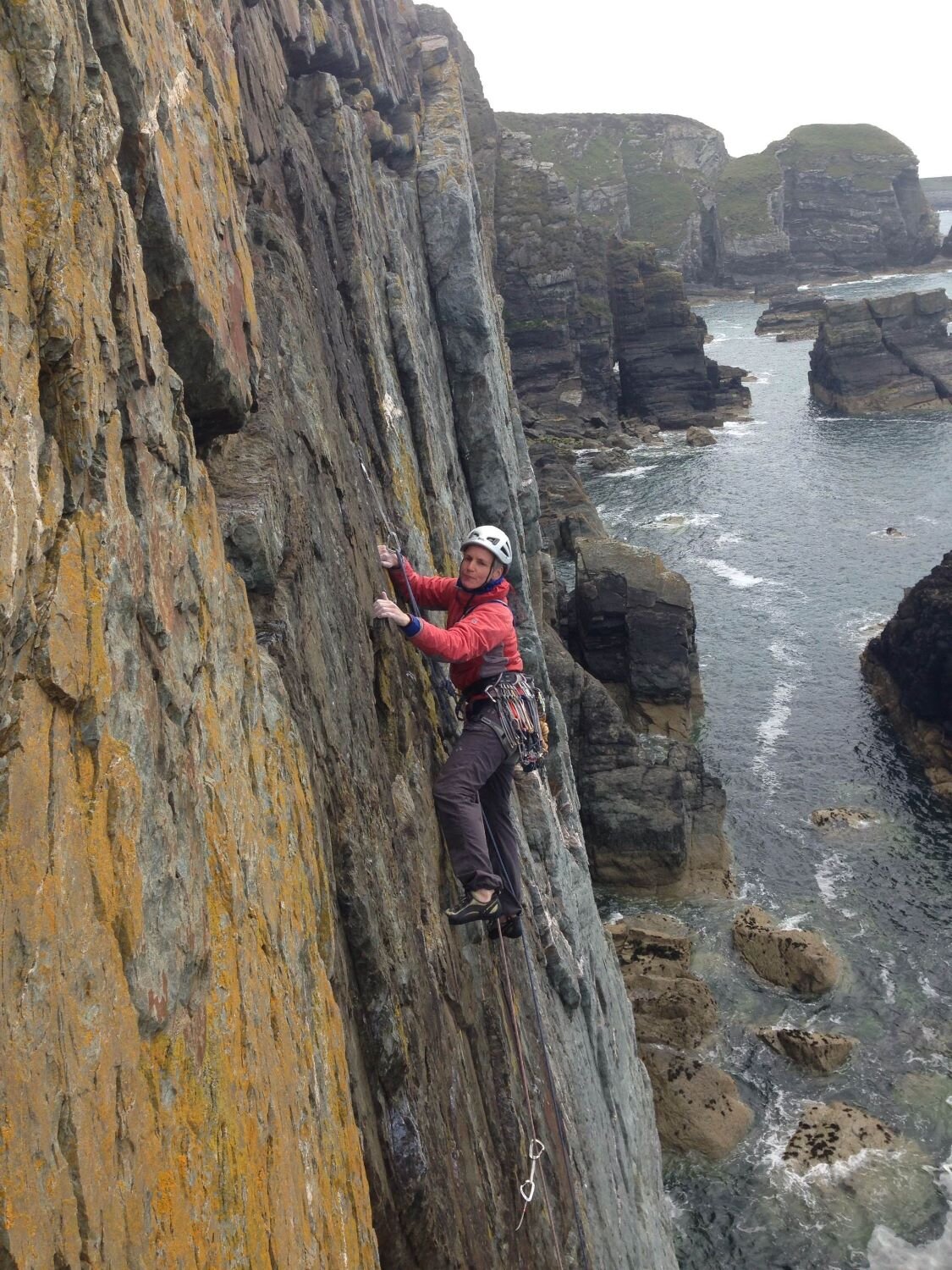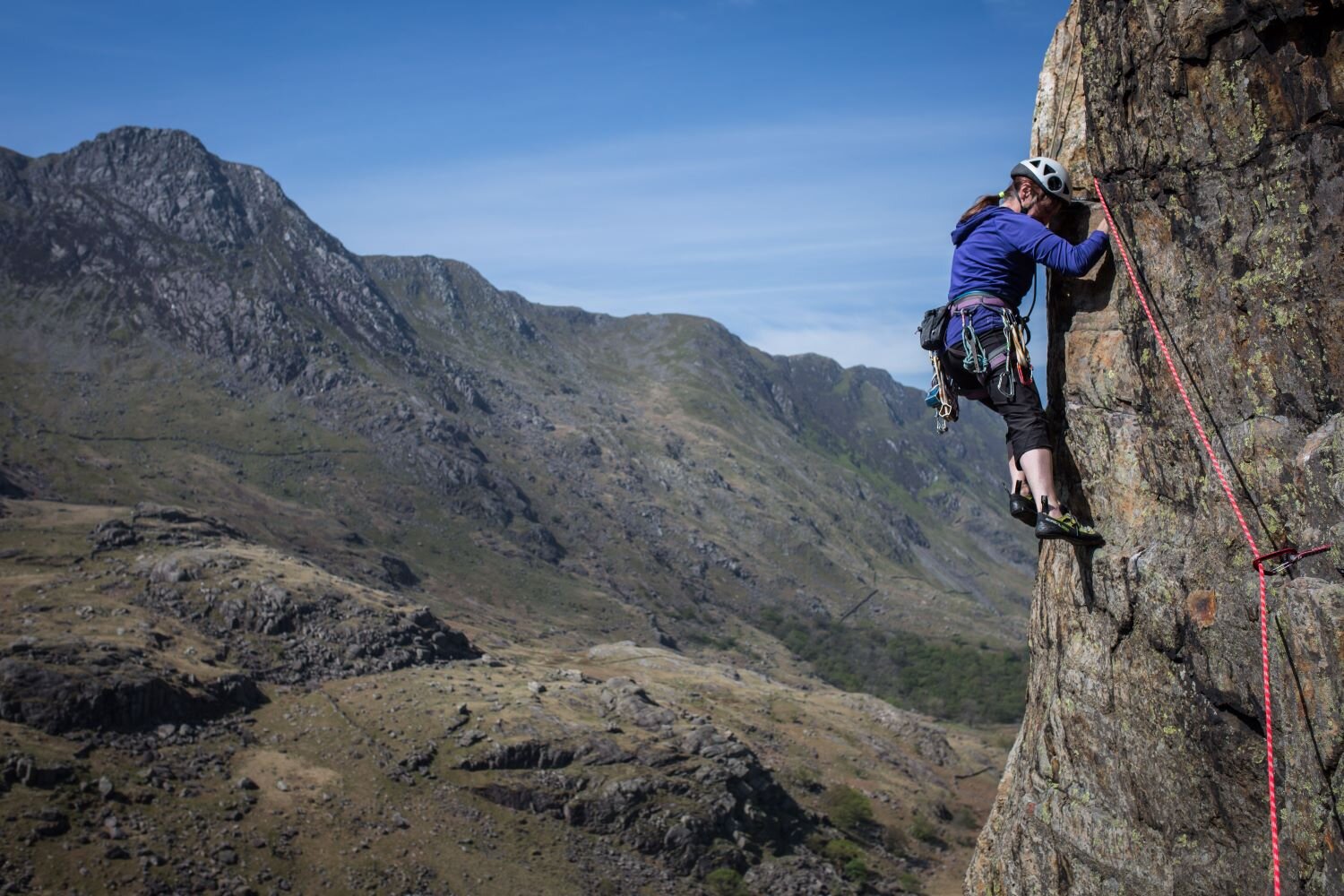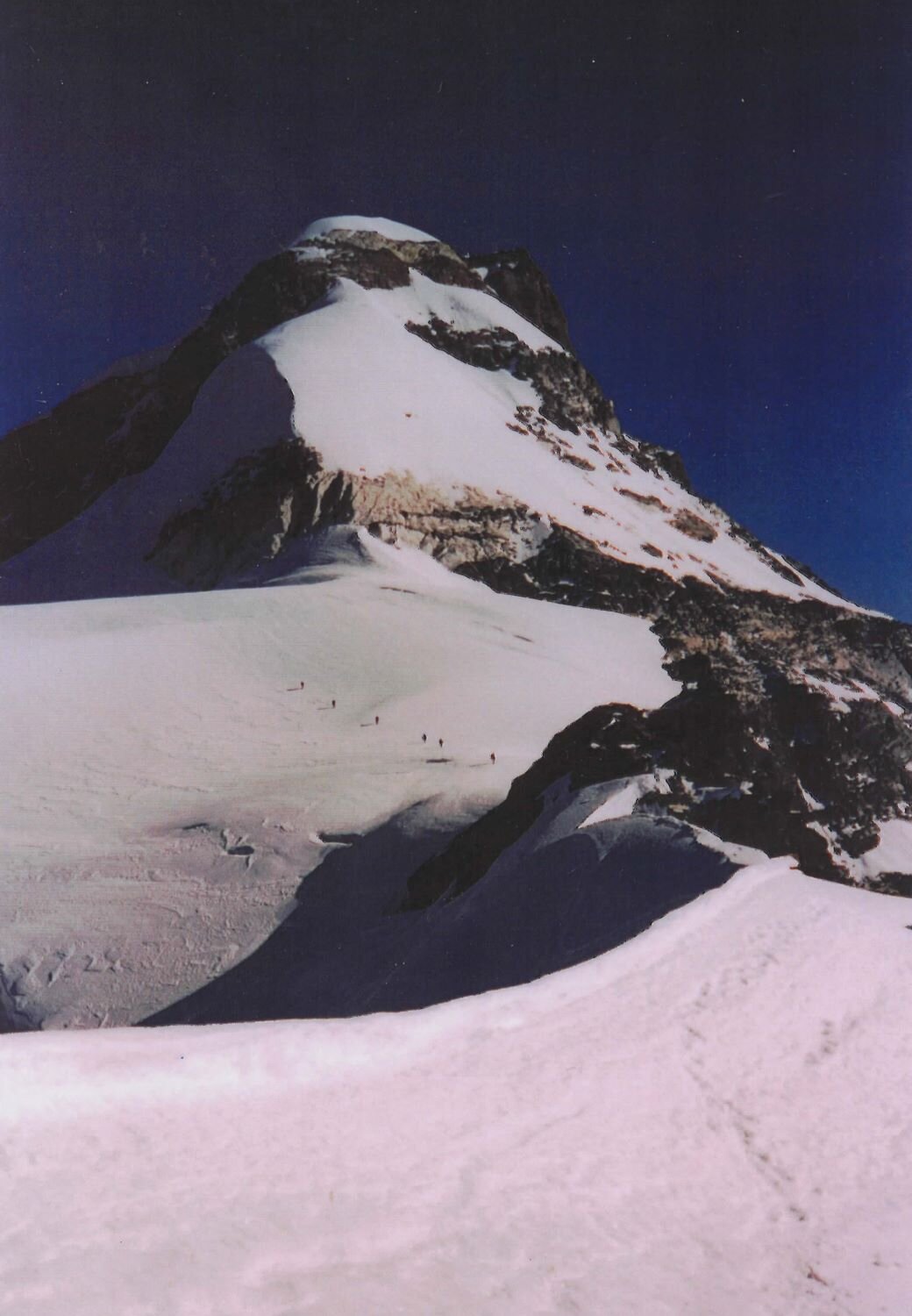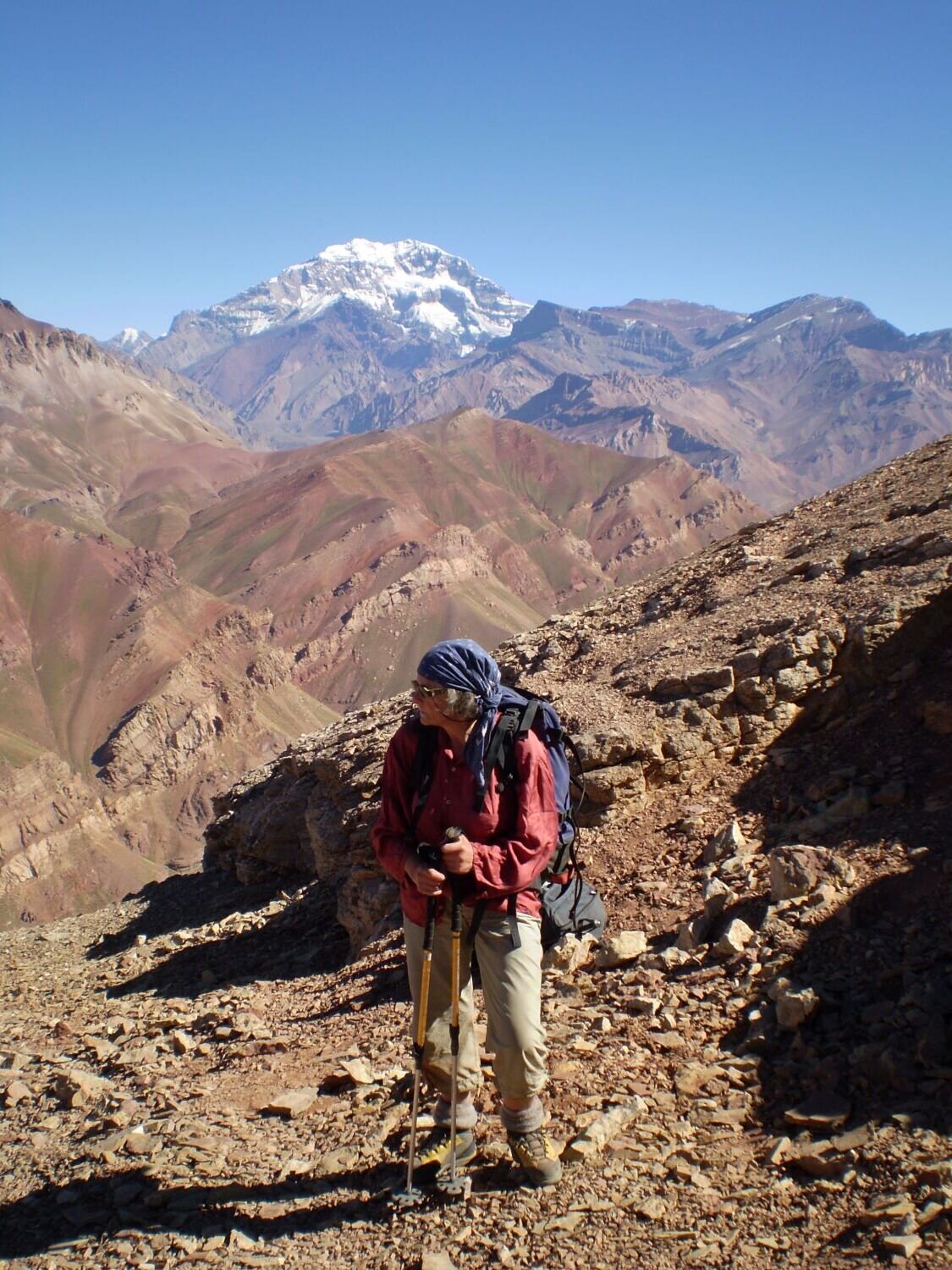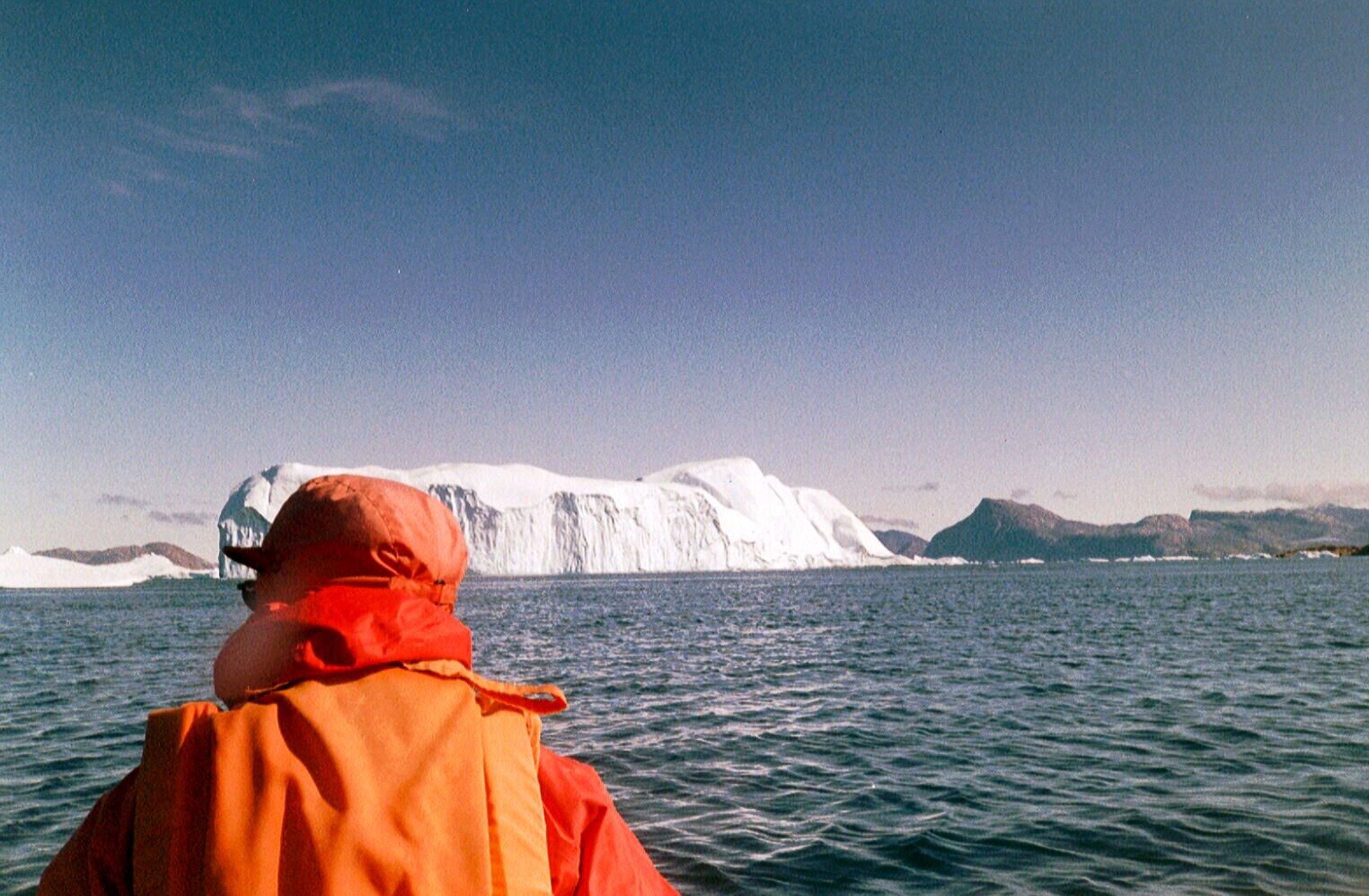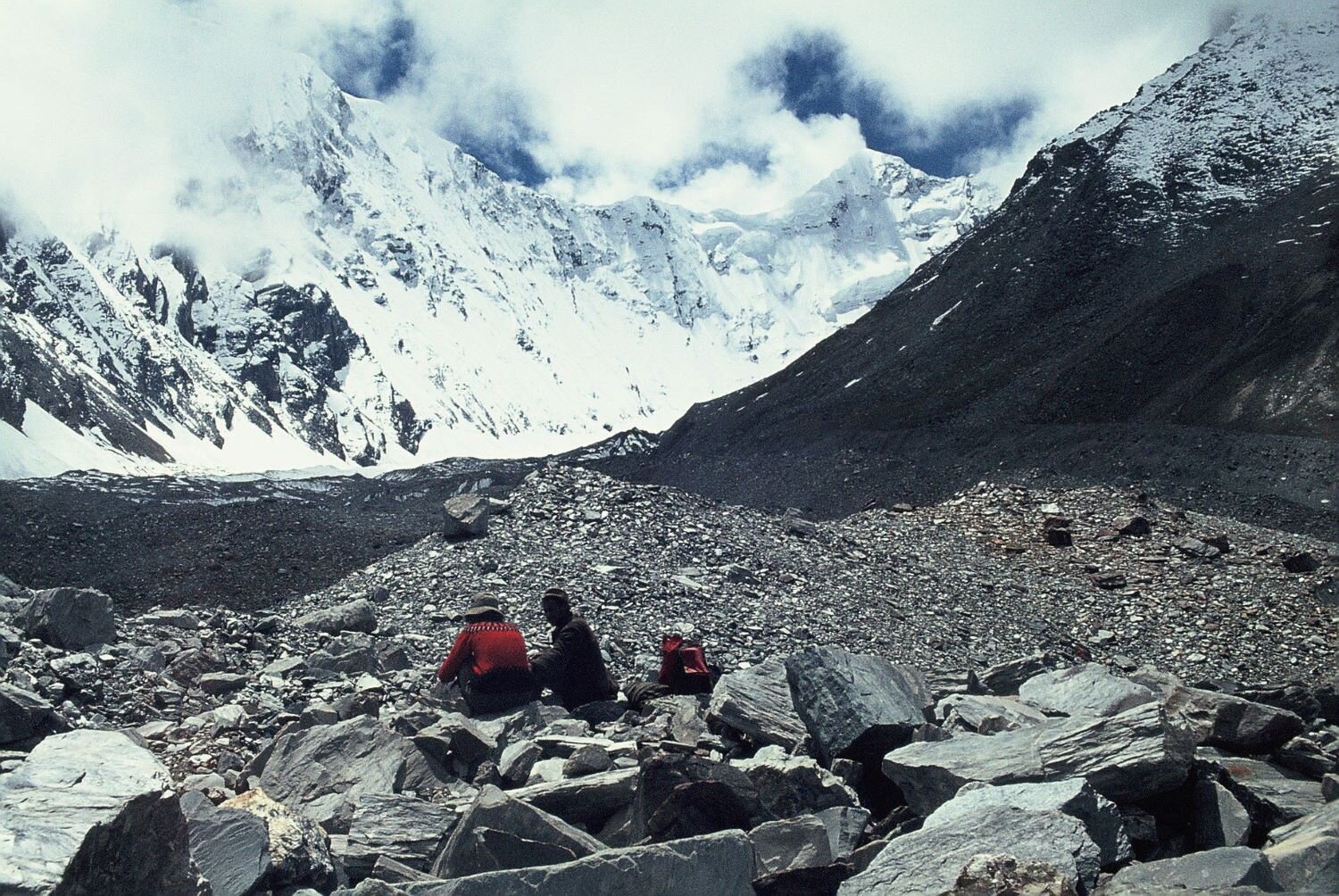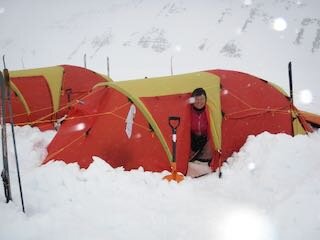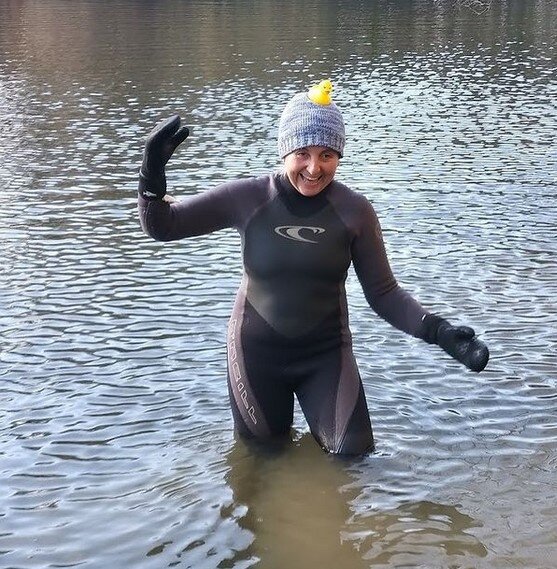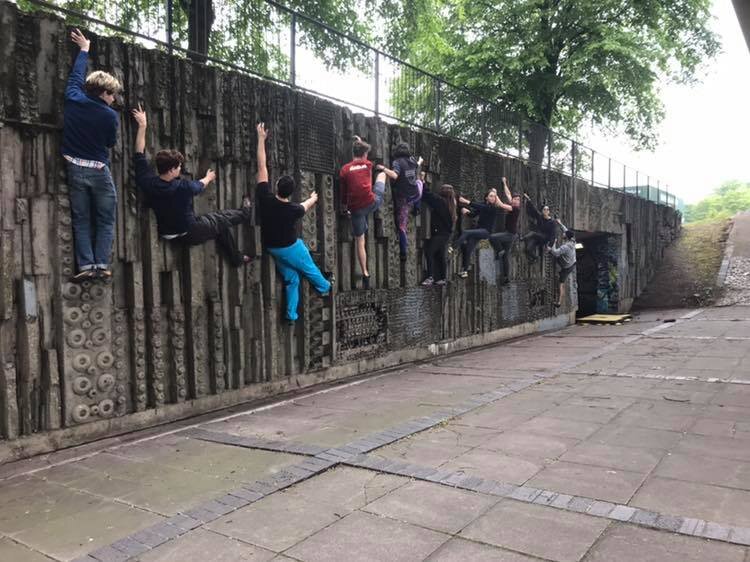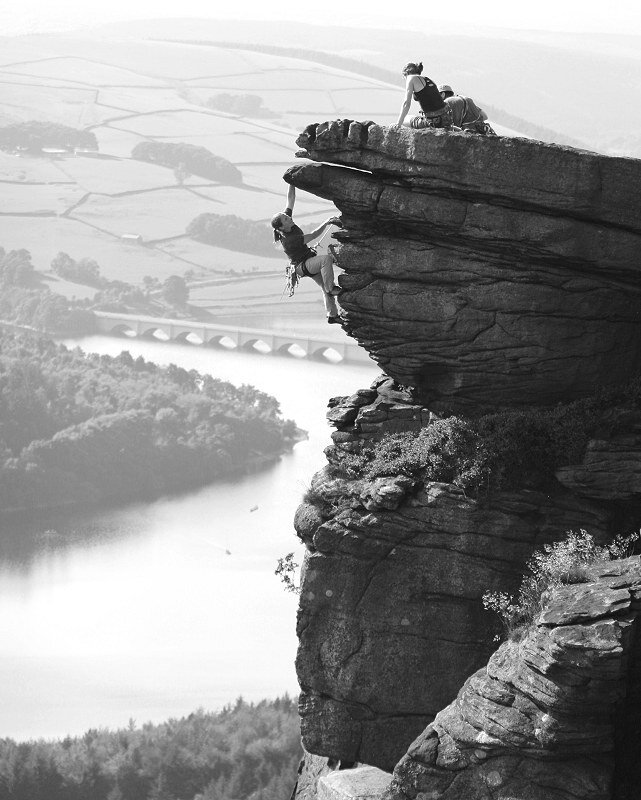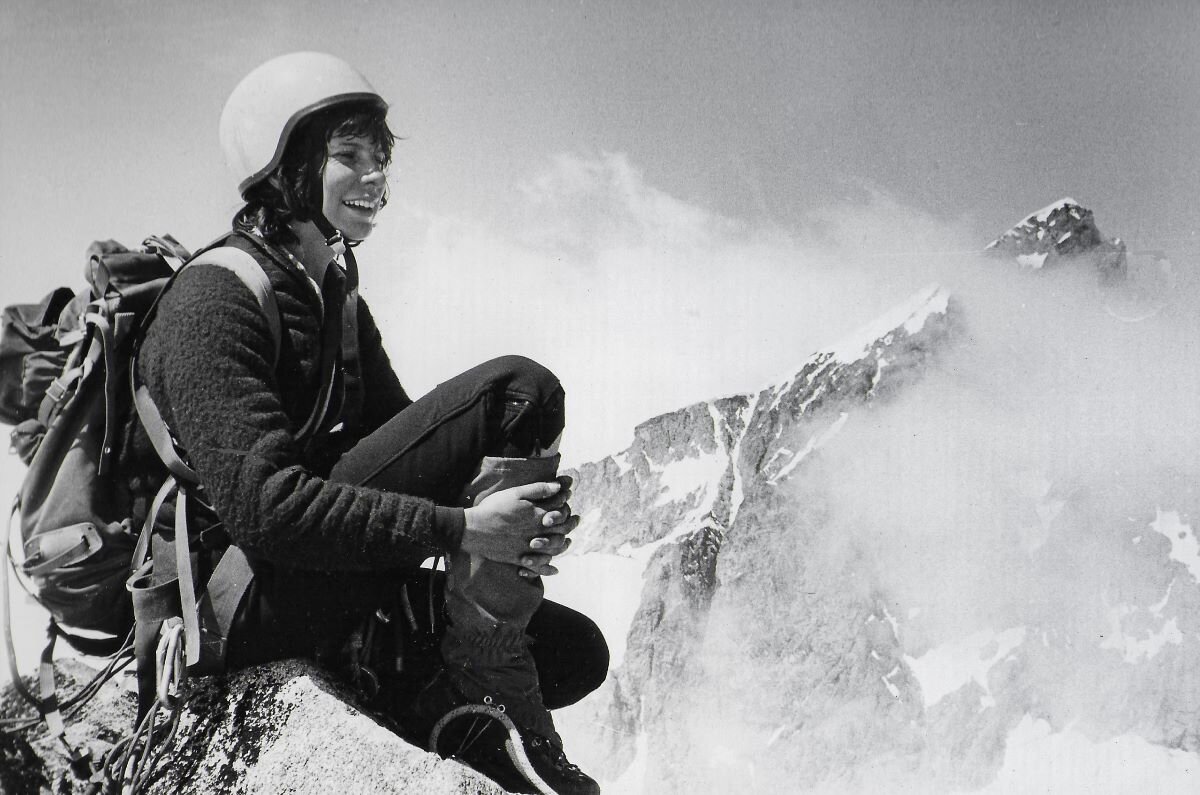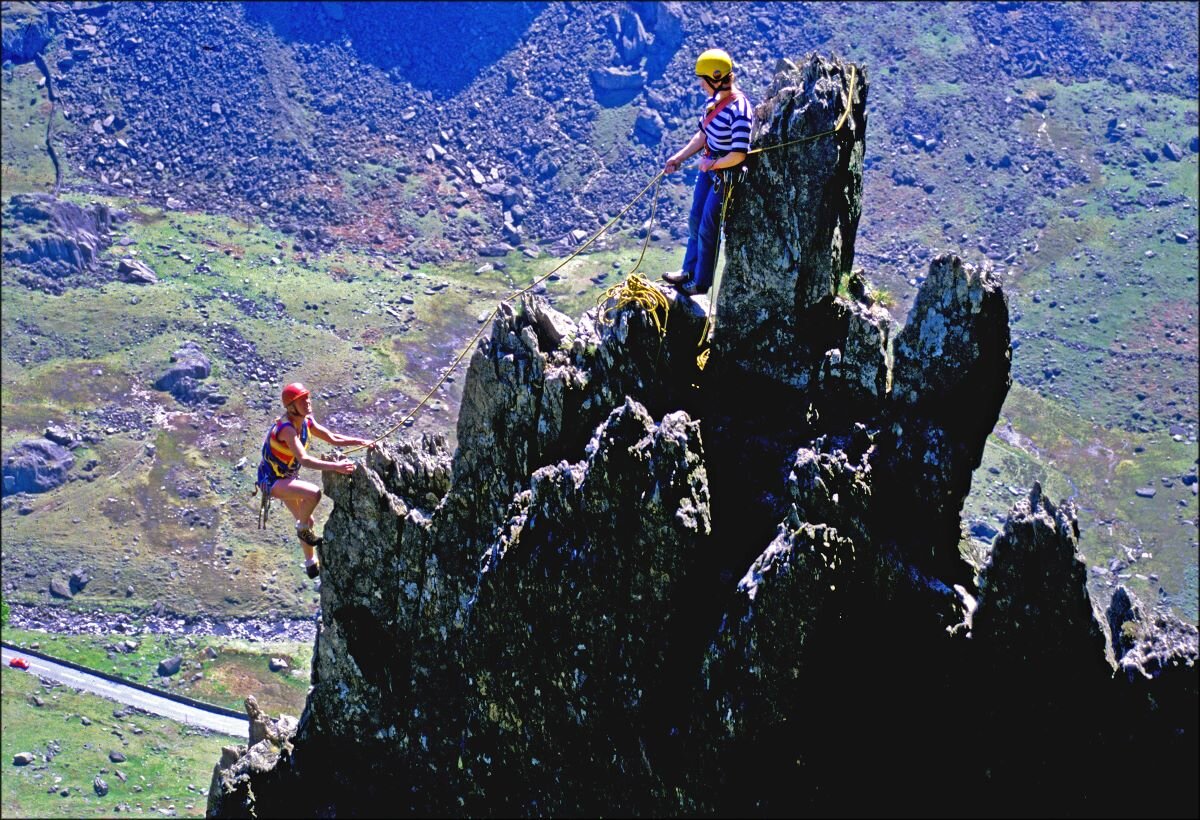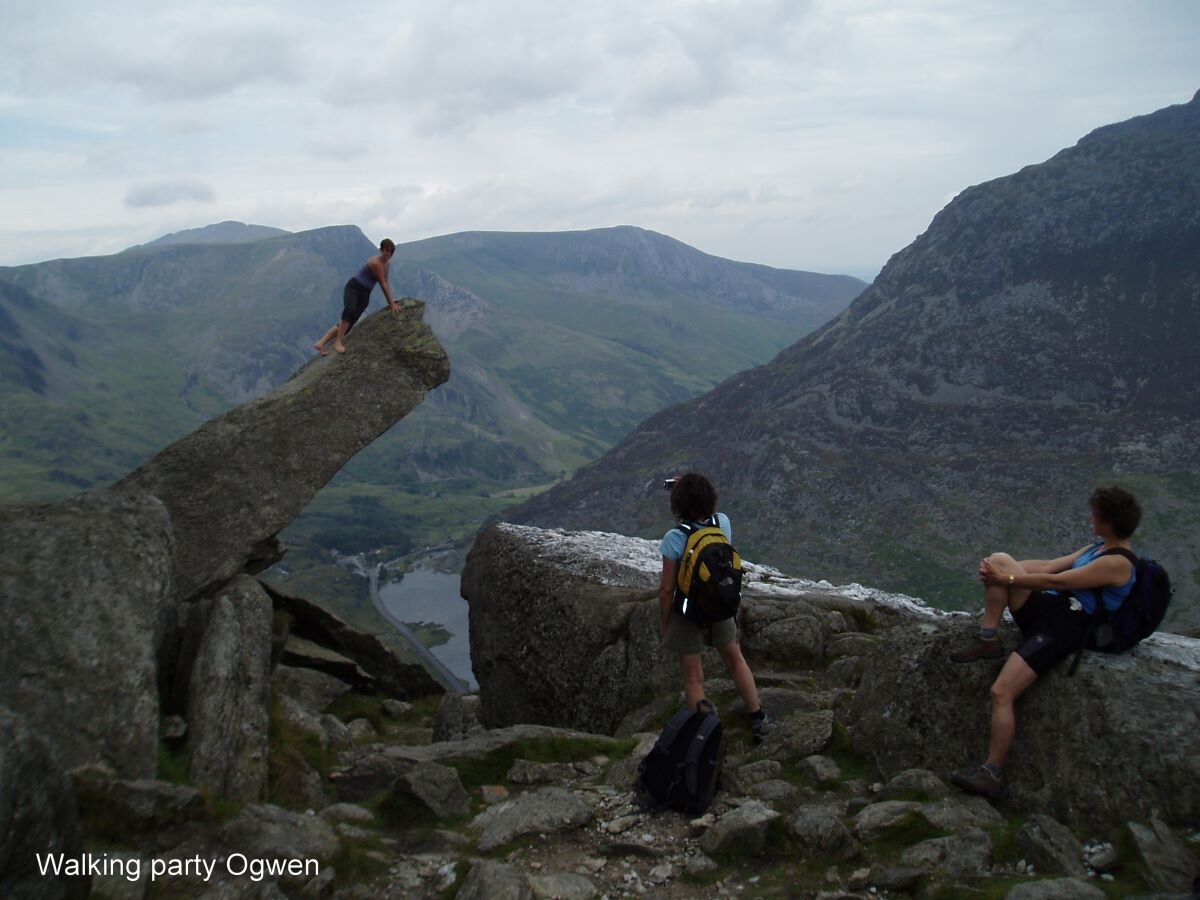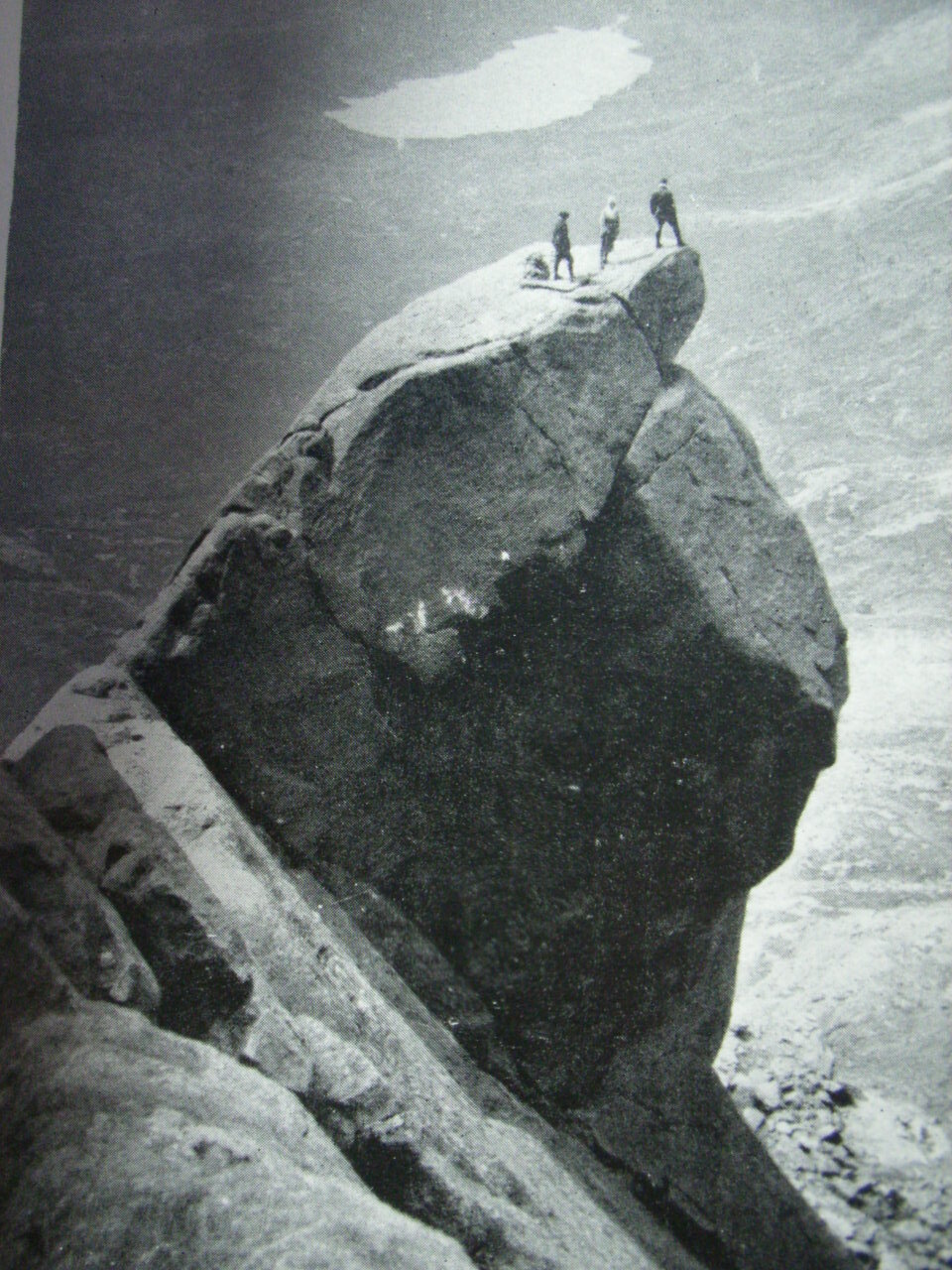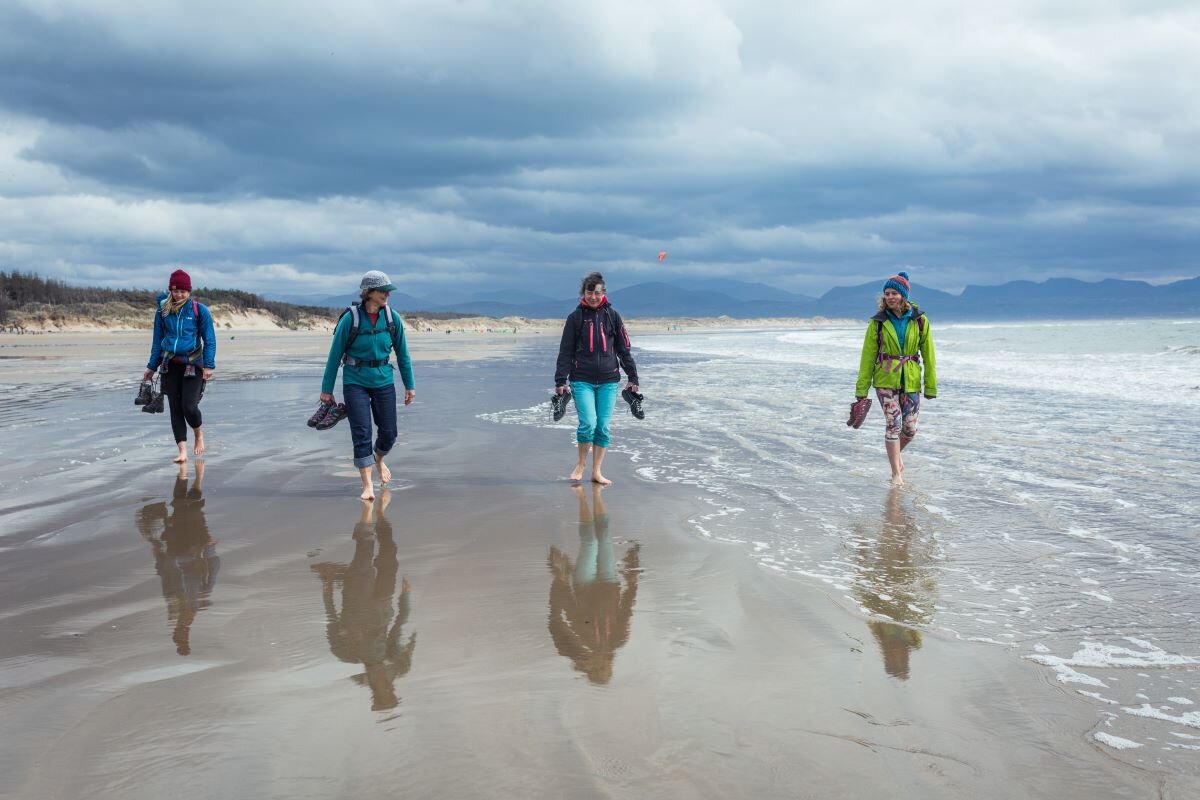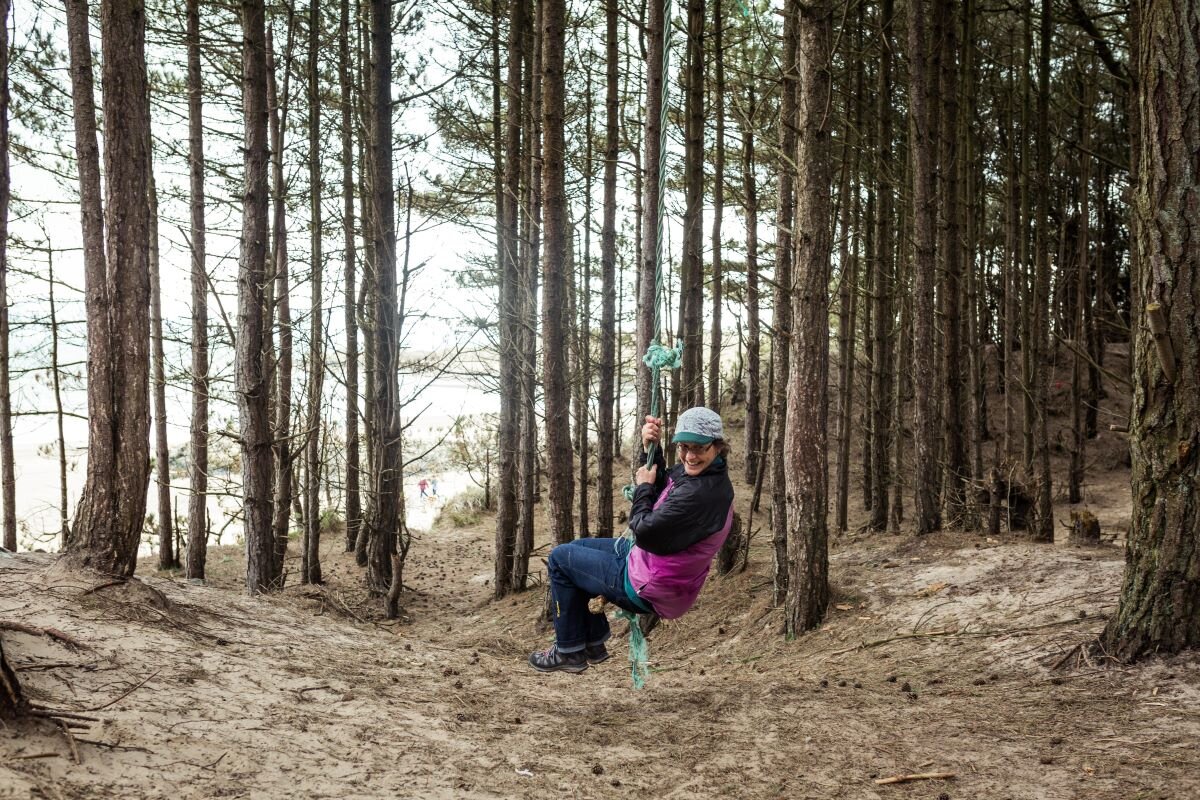Women in the wild: enjoying the outdoors
We don’t see climbing as a purely physical sport, although of course it is that. The connection between climbers and their environment has been there from the start, from early involvement with conservation to the development of nature writing. Climbing gets us close to nature, and we have time to stand and stare, whether on a mountain ridge or on a belay ledge. It provides us with an escape to wild places, often from the confines of a city, and we bring the memories back with us and share them in words and pictures.
The benefits are to ourselves, whether in simple enjoyment of wild places, or in a more long-lasting and deep effect on our minds
The outdoors is a great treatment for mental ills, as well as physical fitness. The connection is there at small or large scale: we can look closely at the lichen on a rock (will it make a slippery foothold?) or stare out at the mountain landscape, the fold after fold of hills, wondering where it will take us next. Sometimes our exploits take us to places where no-one has ever set foot; more commonly to places where access is difficult, and not many people have attempted to get there. We may not arrive together at a mountain col to see a forgotten valley: it may be that we edge sideways, one at a time, onto a cliff ledge, in full view of the road, to find a small hidden chasm filled with green ferns. We may walk in a convivial group on an upland path, and surprise a hare or a deer, or we may watch silently and alone while an eagle circles the valley and returns.
Pictured: Val Hennelly at Hella Point, Cornwall, in 2017. Credit: Jessie Leong.
“At five o'clock, as we sat on the bare rocks of the ridge from which the wind had swept the snow, we were watching the last of the twilight fading slowly from the Duddon Valley. It was absolutely still and beautifully warm in contrast to the chill of the gully we had just left, when suddenly the sky brightened, and to our astonishment and joy, the Northern Lights appeared over the north-western horizon. They grew in strength until they spread an exquisite sea of pearly iridescence from nearly east to west, and their radiance made it possible to see stone walls and shelters far below.” — Northern Lights on Christmas Day, F. Orminston-Chant, Pinnacle Club Journal no. 1, 1924
> Read the journal article (PDF - opens in a new window)
“I like the fells in the dark. There is then an added magic and mystery about them, and a feeling which it is hard to explain. Perhaps it is a sense of power in oneself, and of communion with the hills. One belongs to them then, like any other wild animal: one knows discomfort and hunger and weariness, but never fear of the hills in the dark, even then alone, and in a storm, or in torrents of rain.” — On the Fells in the Dark, Mabel Barker, Pinnacle Club Journal no. 6, 1935-38
We make our escape from the city and the disappointments of life, making our own choice of hazard to experience the thrill of freedom
The dangers may be greater than we intended, and the rewards may be greater too, because we can forget everything but the present moment. When we return, we can remember the hills, and we are better able to face the jobs that need to be done back at home. The connection with nature can be a solitary or a communal experience, but it is always in the end shared. And the language in which we share it can be poetical and indeed be written in verse. Some of this is in the Pinnacle Club Journal archive, and club members have also published books over the years — guidebooks and true tales, as well as fiction.
Pictured: Pinnacle Club members collaborate to cross a river in Iceland
“I was surprised at the small country incidents which I had always taken for granted whilst living in Langdale, which I now noticed and enjoyed: touches of colour, the smell of bracken, and of sun-warmed grass; birds and animals; the warm, comforting smell of cows; all these things made one stand and stare. For town-dwellers and country-dwellers alike 'it is the same beautiful old country, always new!'“ — Autumn Days in Derbyshire, Nancy Carpenter, Pinnacle Club journal no. 7, 1950
> Read the journal article (PDF — opens in a new window)
“I saw more dawns than ever in my life before. Cold ones, crawling from a bivvy tent after a night without duvet or sleeping bag. Waiting on a glacier for the first melt water to refill our only bottle after a thirsty night. Splinters of sun shooting up over a distant peak, then dazzling emergence of the first rays of warmth. Memory snapshots… of a truly rosy dawn tinting Monta Rosa as we struggled up the rubble heap known as the Matterhorn. “ — Alpine Impressions, Royanne Wilding, Pinnacle Club Journal no. 17, 1977-80
> Read the journal article (PDF — opens in a new window)
"And so to finish off with a struggle up the Gribin Angular Chimney and a slide down the Monolith Crack before the night journey back to London. How the contrast shook one! To go back to gloves and high-heeled shoes, pavements and taxicabs. Walking with an umbrella in Piccadilly one felt as though with a little more strain one would become a case of divided personality... The strangeness of the dual life made, in those days, a cleft, a division in my mind that I struggled in vain to build some bridge across. Kind, firm friends would say, 'You can't expect all life to be a holiday'... But to me, and to climbers before and after me, this was no question of holidays. It went down into the very form and fabric of myself." — Climbing Days, Dorothy Pilley
Audio stories
Margaret Clennett at altitude in India, 1993. Credit: Sally MacIntyre.
Jill Lawrence and Gill Price at Raven Crag, Cumbria, in 1984.
Angela Soper at Almscliff, Yorkshire, in 1981. Credit: Mary Loukes.
Jan Rickman at Cima Cason di Formin, Dolomites, in 2018. Credit: Hazel Jones.
Jean Drummond on a lunch stop in Jotunheim, Norway. Credit: John Hill.
Jo Abbott on Scratch (VS), Tremadog, North Wales. Credit: Jill Croskell.
Photo gallery
Click to move through images.
